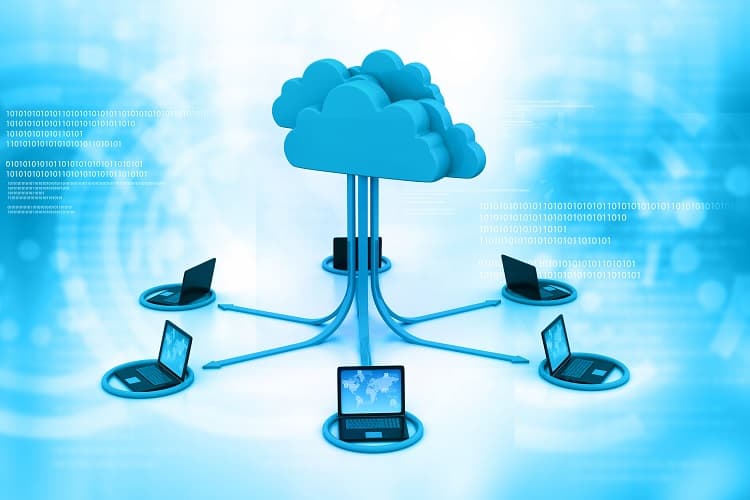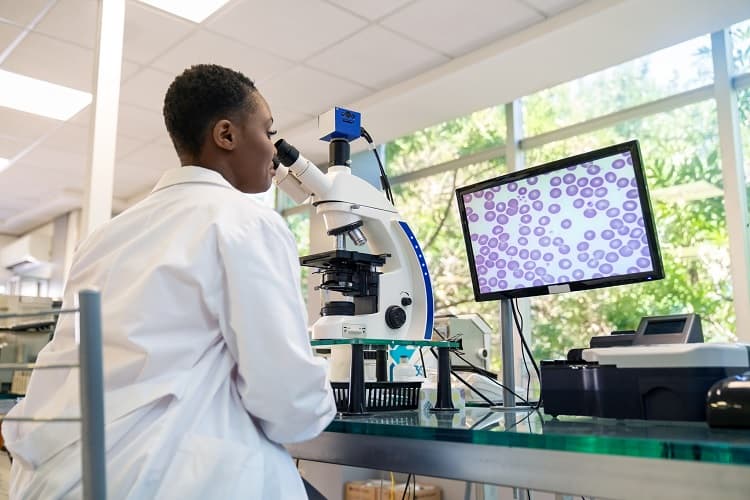Data Modernization

Information is needed faster to spot trends as they are happening and save more lives. That’s why CDC is focusing on data modernization.
To learn how to prevent and treat cancer, public health experts need to know which groups of people are most likely to get cancer. They also need to know how the numbers and rates of cancer change over time. When someone is diagnosed with or treated for cancer, information is sent to a cancer registry. The information includes—
- Details about the patient, including their age, sex, race or ethnicity, and where they live.
- The place in the patient’s body where the cancer started, and if the cancer has spread to other parts of the body.
- The first treatments given to the patient.
Hospitals, doctors’ offices, and laboratories send this information to a central cancer registry. In the United States, there is a central cancer registry in each state, the District of Columbia, Puerto Rico, the U.S. Virgin Islands, and the U.S. Pacific Island Jurisdictions. Specially trained people who work at a registry check the information to make sure it’s correct and complete. They also make sure each cancer case is recorded only once. Once a year, they remove personal information that identifies individual patients. Then they send the rest of the information to CDC, the National Cancer Institute (NCI), or both. CDC puts all of this information together into the United States Cancer Statistics, the official federal cancer statistics. You can see it in the Data Visualizations tool.
Anyone can use the Data Visualizations tool to learn about cancer trends in their area. Doctors, scientists, and people who are in charge of cancer control programs can use U.S. Cancer Statistics to—
- See if more or fewer people are getting or dying from certain kinds of cancer.
- Find out which groups of people are more likely to get or die from certain cancers.
- See counties where people are getting or dying from certain cancers more often, so cancer control programs can help them.
Checking the Data Takes Time
Each year, central cancer registries collect information about more than 1.7 million new cancer cases. It takes a lot of time to check the data, since some of these steps are done manually. After the registries send the information to CDC or NCI, the information is checked again before it’s published. The whole process takes 2 to 3 years. Information is needed faster to spot trends as they are happening and save more lives. That’s why CDC is focusing on data modernization.
Data Modernization Projects
Data modernization is the process of moving data from outdated separate computer systems to modern cloud-based systems. Cloud-based means it’s on the Internet rather than on a local server or personal computer.
CDC is piloting a framework for automated electronic reporting from electronic health record systems in clinical settings to central cancer registries. The framework builds on modern health information technology standards such as HL7 FHIR (Fast Health Interoperability Resources). Making Electronic Data More Available for Research and Public Health (MedMorph) provides a standard resource, the Reference Architecture Implementation Guide, to address data exchange needs and reduce reporting burden with a common, streamlined approach. Cancer registry reporting requirements have been defined in the Central Cancer Registry Reporting Content Implementation Guide. The implementation guides facilitate automated electronic reporting of cancer information in real time. This will improve the timeliness and quality of cancer surveillance data.
One way to get the data faster is for hospitals, doctors, and laboratories to send data to cancer registries electronically. Almost all cancers are first diagnosed through pathology reports, which identify the type of cancer. In 2005, CDC’s National Program of Cancer Registries (NPCR) started helping laboratories send pathology reports to cancer registries electronically. A separate connection was needed between each laboratory and each registry to send the information securely. For example, if a laboratory sent reports to 50 registries, NPCR had to set up 50 connections between that laboratory and each registry. It would take too much time and money to do this for every laboratory in the United States. So NPCR staff worked on ways to improve the process.
In 2018, NPCR began a project with the Association of Public Health Laboratories (APHL). The APHL Informatics Messaging Services (AIMS) platform is a secure cloud-based platform. Many health care providers use the AIMS platform to report infectious diseases to public health agencies. NPCR staff made it possible for laboratories to send cancer pathology reports to the AIMS platform instead of directly to cancer registries. This way, laboratories need only one connection to send cancer data to registries securely. The AIMS platform checks the reports for errors and sends them to the appropriate registries automatically. Laboratories can send reports to the AIMS platform automatically every day.
As of September 2023, 35 laboratories send cancer pathology data daily from 157 Clinical Laboratory Improvement Amendments (CLIA)-certified laboratory facilities to all 50 state cancer registries and the District of Columbia. The AIMS platform has standardized and streamlined real-time cancer pathology reporting to cancer registries. The goal for the next year is to implement real-time reporting from as many as 10 more laboratories to all public health jurisdictions.
The Childhood Cancer Survivorship, Treatment, Access, and Research (STAR) Act empowers CDC to improve early identification and track the epidemiology of childhood cancer. NPCR’s Childhood Cancer STAR Project focuses on recruiting and training potential reporting sources, such as laboratories, hospitals, and health information exchanges, to report cancers diagnosed in children, adolescents, and young adults electronically. In 2018, as part of its STAR Project, NPCR started the cloud-based National Oncology rapid Ascertainment Hub (NOAH). NOAH helps central cancer registries analyze laboratory reports and process data faster.
NPCR is developing a new cloud-based computing platform specifically for cancer data. NPCR’s Cancer Surveillance Cloud-based Computing Platform (CSCBCP) will work much like the AIMS platform. Everyone who sends cancer information to cancer registries, including hospitals, doctors’ offices, and laboratories, will be able to use the new platform. The CSCBCP will collect, process, and store all of the data that central registries routinely collect. Registries will be able to see the information in real time (as soon as it is entered into a computer) and can check to make sure it is correct.
Benefits of Moving to the Cloud
The cloud platform will greatly increase speed of reporting, improve efficiency and data quality, decrease long-term costs, and improve CDC’s ability to support public health agencies. It will allow—
- Faster evaluation of cancer control strategies and improved program planning.
- Better coordination of data activities and systems across agencies.
- Easier data collection for partners.
- Timelier adoption of new technologies for collecting and using cancer data.
The new system will allow cancer registries to collect, edit, and store cancer data more efficiently.
NPCR has several projects that focus on how to use technology to automate processes and exchange data electronically.
NPCR defines data reporting standards and develops models and tools to advance electronic reporting of cancer cases.


